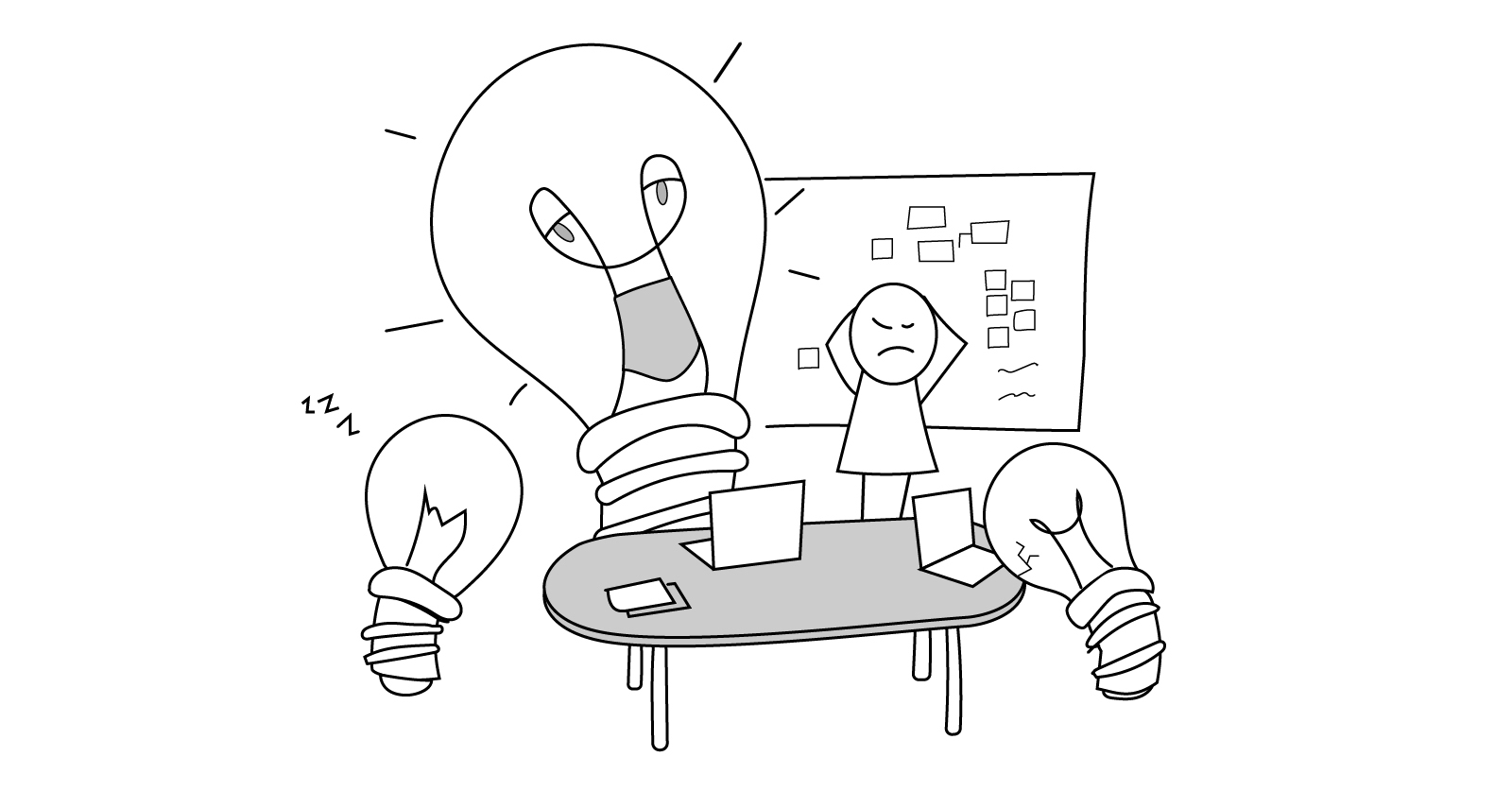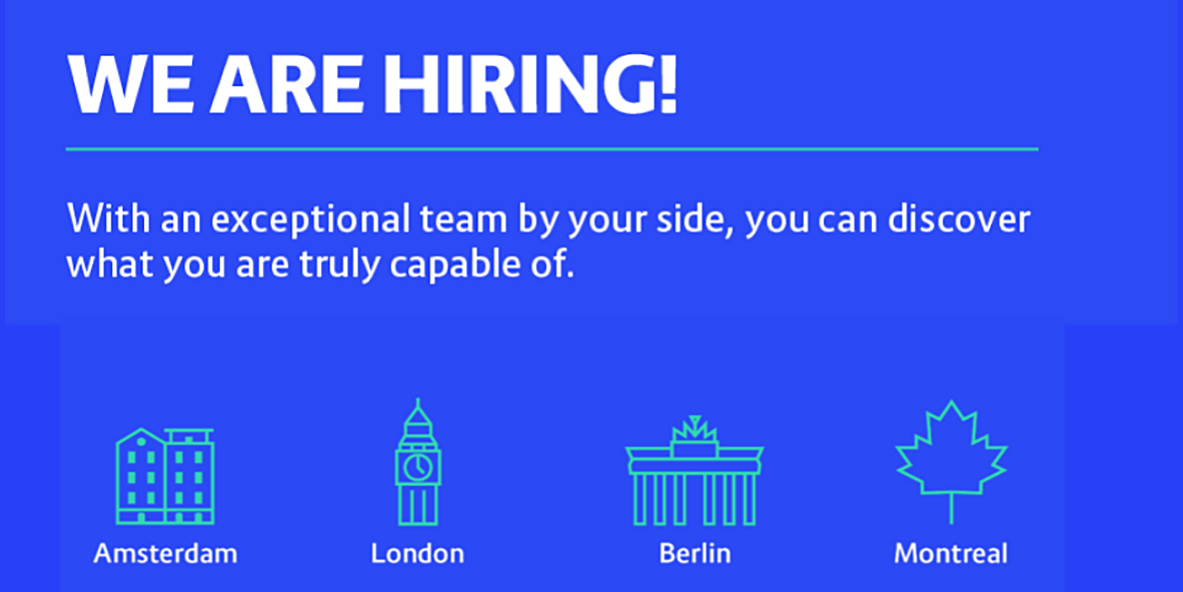Tips and techniques to make you a better facilitator
Q: “How do product managers resolve the problem of unproductive workshops?”
A: “They set up a workshop to “workshop” how to make workshops more productive.”
*ba dum tss*
As a product person, how many times have you had your workshop railroaded or felt that it could have gone a bit better?
As problem solvers, workshops are one of the tools product managers use to bring teams together to discuss and align on problems and solutions, but not all workshops are created equal. Over time I've had the opportunity to facilitate multiple workshops, which has allowed me to improve how I run them each time.
Before we get into the details, we should note that this is not intended to be exhaustive. Instead, these are the tips and techniques I have learnt that have helped me time and time again when facilitating workshops, whether in-person or remote.
Before the workshop
Address the imposter syndrome
First, let’s talk about the feeling of imposter syndrome. Very often when facilitating a workshop, you will not be the expert in the room and this can feel intimidating. How do you facilitate a conversation where you have no idea what the participants are talking about?
The good news is that no one expects you to be the expert.
When you really break it down, workshops are just conversations between people who are trying to align on something. As a facilitator, your job is to make that conversation happen in such a way that everyone walks away with a shared understanding of whatever triggered the need for a workshop in the first place. One could therefore argue that the desired outcome of a workshop is team alignment.
It is in fact an advantage not to be the expert in the room, because if you are both expert and facilitator, the workshop is a debriefing or question-and-answer session in disguise.
Realise when you are NOT ready for a workshop
Q: “How do you avoid a workshop being a waste?”
A: “Make sure to set an outcome/goal for the workshop and prepare accordingly to achieve it.”
Before organising a workshop, have some sort of pre-checklist/definition of “ready” to ensure that going ahead will be the best use of every participant’s time.
The “definition of ready” for a workshop will be dependent on its goal, but any checklist should include:
- Are the intended participants the relevant people to bring together?
- Do the intended participants have the time?
- Do the intended participants know enough about the problem?
- Is the why/goal known?
- Is a workshop the best tool to use to solve the problem at hand?
- Is there an agenda and has that been sent out?
- Do the participants need to do any reading beforehand?
- If running the workshop remotely, are the technical tools in place i.e. video conferencing and whiteboarding etc.?
Workshops are time commitments, so you want to make sure that the participants feel like they are making the best use of their time by being there.
Pick your players
Running workshops shouldn’t be a solo/one-person show but rather a team event i.e. everyone should be as invested in making it as productive as it needs to be. Here are some roles to consider:
Co-facilitator: Having a co-facilitator to assist with the admin, like keeping track of time and note-taking, helps keep the workshop moving. It saves you from having to break the flow and keeps you focused on guiding the participants.
Expert: Having an expert on the subject matter of the workshop is very useful for providing guidance and keeping the participants educated on the problem space. This person also acts as a sounding board for the team to check if the discussion is going in the right direction.
Decider: Your decider is the one person during the workshop who has the power to decide what it focuses on or the direction it takes. You may not always have a decider, but if you do there should be only one, and they should be someone with authority. A major business stakeholder relevant to the focus of the workshop is ideal. If your decider can’t be present then a representative should be.
FYI: Sometimes it may be tempting to wear both facilitator and participant hats, but it’s generally best to keep them separate. As mentioned earlier, workshops are not solo shows and it becomes too easy to inadvertently force the workshop to go a certain way if you are both participant and facilitator. If you need to take an active part at any point, get someone else to facilitate during those moments, which is something a co-facilitator can certainly help with.
Plan your icebreakers
Conversations are better when the participants are more comfortable and relaxed, which is where icebreakers come in. You can’t avoid people feeling tense and having their guard up before a workshop, and for some this will be the first time they are interacting with some of the other participants. Imagine you walked into a room full of strangers: irrespective of your personality, it will still take you a while to get comfortable.
There are so many activities you can run to break the ice, some related to the workshop and some just to ease the tension. I mostly run remote workshops and my go-to icebreaker activity is to create some sort of drag-and-drop game on a Miro whiteboard to not only get the participants used to the tooling, but more importantly for the participants to feel relaxed.
During the workshop
Get everyone on the same page
The start of your workshop involves setting the scene. It is very important at this stage that you set the right expectations and focus in order to get everyone on the same starting line.
Think of the role of the facilitator as a guide, so your job is to guide people through various activities to get to a destination. To do this well, you will certainly want people to be on the same page. Misalignment at this stage will impact how people interact for the rest of the workshop.
Keep things focused and moving
At some point the workshop will almost certainly threaten to stall. This is where you must know how to guide the participants to make those important decisions and avoid getting stuck in endless debates.
There are various methods you can use to make decisions, with dot voting being one of the most popular. A common confusion when voting is to determine how many votes to give out–whilst this is not a hard and fast rule, a good tip is to give each participant ¼ the number of votes of the total number of items to choose from. i.e. if you had 12 items to choose from, give each participant 3 votes.
A word of caution: Voting methods such as dot voting favour majority rule and sometimes the majority can be wrong. This is where having a decider as part of the workshop can be useful as they can help make the final call and help keep things moving.
Avoid a battle royale of ideas during brainstorming sessions
At some point during your workshop you’ll find yourself asking the team to brainstorm on a topic. One common pitfall here is that the loudest person in the workshop takes over and other participants’ ideas are not heard.
Adam Grant, an organisational psychologist, put out a great tweet on brainstorming referring to the concept of “working alone but together”. What this means is that rather than have everyone voicing out their ideas during a brainstorming session, have the participants first generate ideas individually and quietly. As the next step, have them share their ideas in turns and then evaluate together as a group. This way everyone gets heard and good ideas don’t get lost. We explored on WTF in the context of hybrid meetings how it is important to make sure everyone can participate, and that is every bit as important in a workshop.
Pro-tip: Attempt to cluster ideas together after any brain-dumping / idea-generating exercise before moving on, as that helps identify recurring themes.
Another pro-tip: Try to incorporate a mini break just before a big brainstorming session that allows people to stretch, make a cup of coffee, go for a short walk, etc. There is evidence out there that suggests that people tend to have creative breakthroughs when they are engaged in another activity that doesn’t require much thought.
|
How to deal with challenges during brainstorming sessions
These techniques are not exhaustive when dealing with disruptors and there are tons of articles that have been written about this topic. |
After the workshop
Define your next steps
You are at the end of your workshop: how do you ensure you don’t need to schedule another one?
It’s a good tip to leave participants with a clear understanding of what happens next. If you’ve identified actions during the workshop, ensure that they are actually actionable, and have been assigned to someone.
Another good activity is to have a quick retrospective at the end to identify what went well and what could have been better. Receiving feedback is helpful and it’s good to collect it when everything is still fresh in the participants’ minds.
There’s always a risk that participants forget what was discussed and agreed as soon as they leave. Sending summary notes is a helpful way to ensure that the discussions, decisions and actions identified are recorded and can easily be referred back to and followed up by the participants.
Every workshop should start with a goal. At the end of the workshop, you should check to see whether it was achieved. If it wasn’t, you should reflect on what could be improved for next time.
Final thoughts: Practice improves your ability: the more workshops you facilitate, the better you’ll become. Remember, no one becomes an expert overnight.



 Previous article
Previous article
